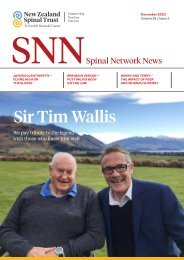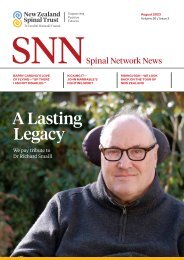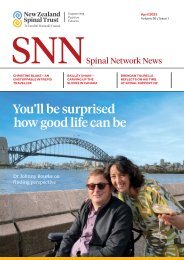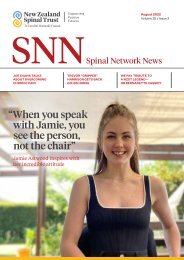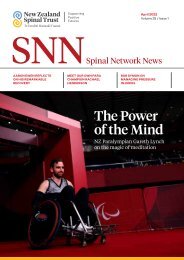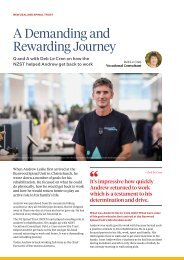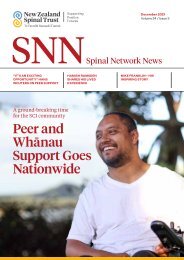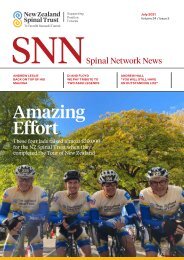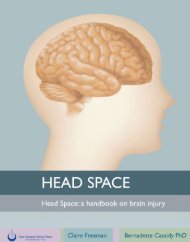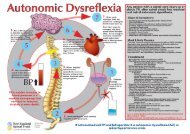WCMT-Melissa-Kelly
You also want an ePaper? Increase the reach of your titles
YUMPU automatically turns print PDFs into web optimized ePapers that Google loves.
Conclusion<br />
The key objective of the <strong>WCMT</strong> fellowship was to review selected international vocational<br />
departments in an embedded hospital programme and their resourcing. Furthermore community<br />
support available to patients following discharge from rehabilitation units, and ways to improve<br />
community links and education around SCI. In terms of improving employer education the key<br />
questions presented during the research were:<br />
1. What do you promote as the benefits of employing someone with a disability?<br />
2. At what stage do you engage with an existing employer?<br />
3. What are the typical questions and concerns from employers?<br />
4. Is there funding available to address equipment and accessibility needs?<br />
5. How do you approach employers?<br />
Employment rates after SCI vary widely depending on many variables, particularly however the<br />
measure of employment. By measure of employment, I mean what the analysing person defines<br />
as work, for example paid work, voluntary work, full-time work or paid work more than 5 hours<br />
per week. Statistics also, do not necessarily reflect the complexities that sit alongside the return<br />
to work process.<br />
Characteristics influencing employment after SCI include demographic variables, injury-related<br />
factors (age at injury, level of impairment, functional capacity), employment history or in many<br />
cases a limited history of work, psychosocial issues such as transport, physical health, life skills,<br />
motivational level/expectation to work and not forgetting, very importantly the support systems<br />
available.<br />
It is well reported that those individuals with SCI who are working, experience significantly<br />
better quality of life, sense of purpose and other benefits. However, the barriers to returning to<br />
meaningful work can be daunting and numerous. I have learnt that the most common issues of<br />
the countries I visited were access to transport, housing and flexibility of carers.<br />
Vocational rehabilitation programmes that address these barriers are essential. Vocational<br />
rehabilitation programmes in the acute setting, are even more beneficial to reduce the potential<br />
learned dependency of a person and to bridge the gap between employers and the individual. The<br />
area of acute vocational rehabilitation needs to be a focus of research, to understand, better<br />
communicate and improve vocational rehabilitation outcomes among this population of<br />
individuals with SCI.<br />
<strong>WCMT</strong> Research Fellowship 33




